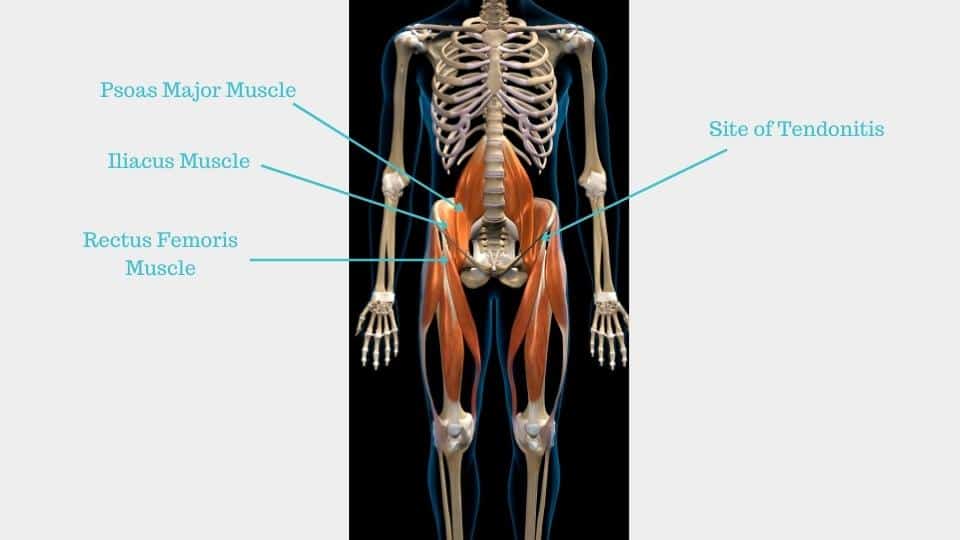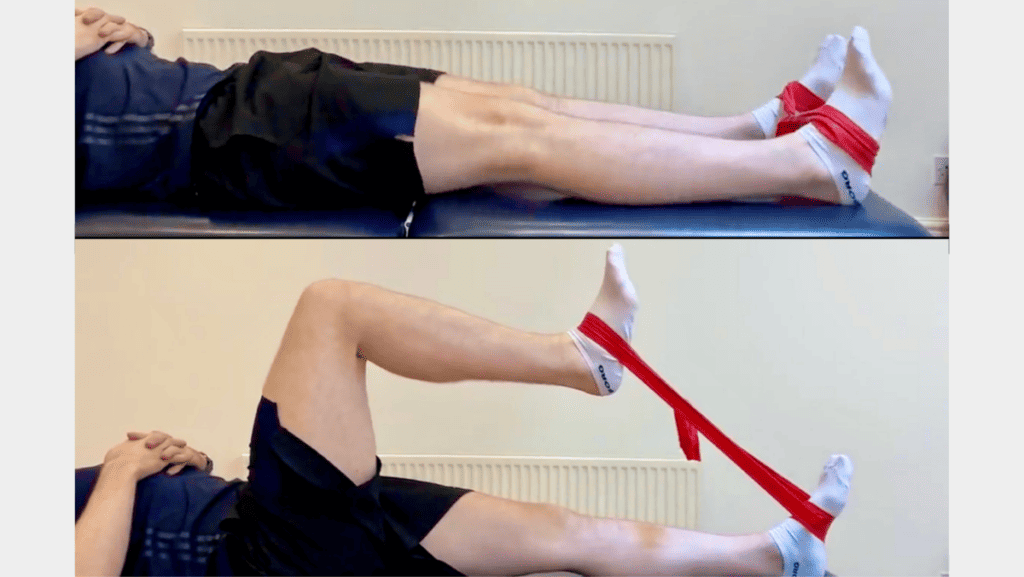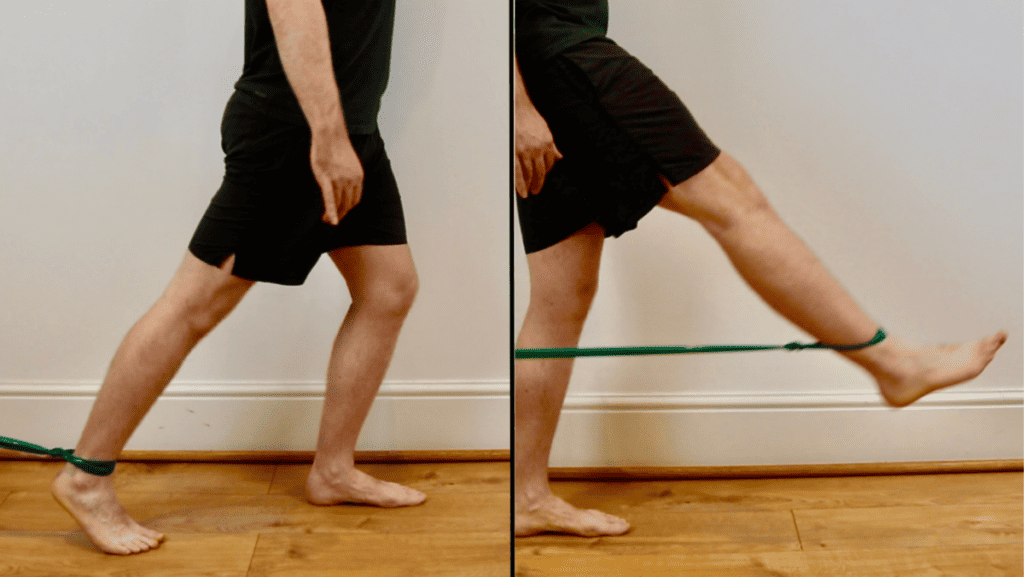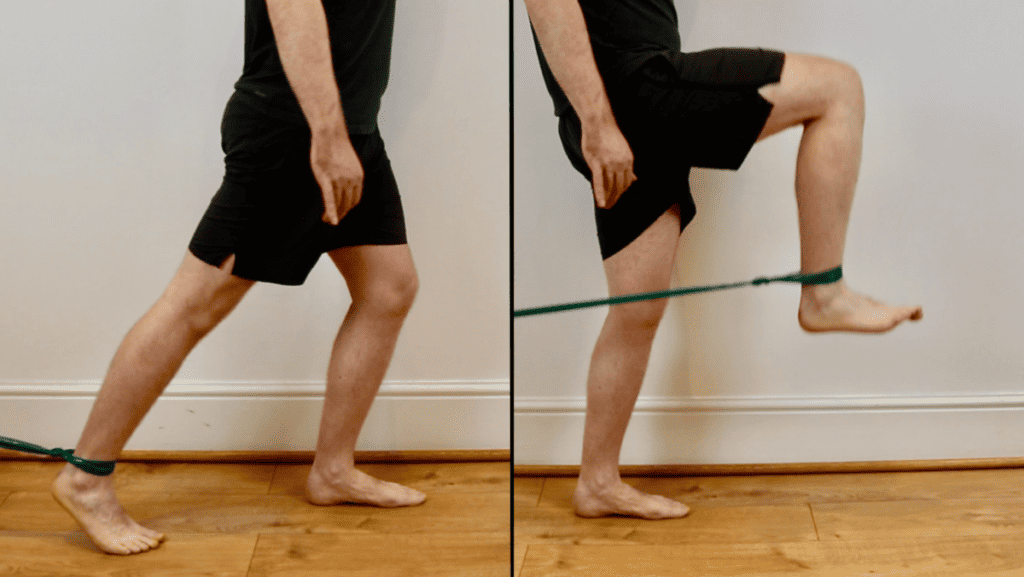Hip Flexor Tendonitis
- Outside Ankle Pain: Running, Standing, Walking - February 14, 2024
- Plantar Fasciitis Taping - January 30, 2024
- Peroneal Tendonitis Taping - January 30, 2024
What is Hip flexor Tendonitis?
Hip Flexor Tendonitis, also known as Hip Flexor Tendinopathy, is a painful condition involving tendons at the front of the hip. It is common in athletes exposed to repetitive hip flexion movements, such as cyclists, runners, and dancers.
Tendonitis pain generally has an insidious onset, with some degree of stiffness in the early morning. It tends to get better with some dynamic warm-up and reappears after exercising.
One of the reasons a Hip Flexor tendon may become painful is an overload, particularly in runners attempting some speed training or in track and field athletes training at high velocities. From a clinical point of view, there may be pain upon contraction or stretching of the hip flexors.
What are the hip flexor muscles?
The primary hip flexor muscle is the iliopsoas, formed by combining two different muscles: the Iliacus and the Psoas. It is considered the most critical anterior stabiliser of the hip joint. Because of this, it tends to compensate whenever there is an overload of the hip or the groin, thus leading to symptoms.
It may also overcompensate for a deficit of the Gluteus Maximus or the Hamstring muscles. Hence, testing of these structures is warranted to prevent future injury episodes. Other muscles that act as hip flexors are the rectus femoris, the sartorius, the tensor fascia lata, and the adductor longus.

What else can cause hip flexor pain?
For runners who experience hip flexor pain running, an ordinary differential diagnosis is a stress fracture of the femoral neck. This tends to have a similar clinical presentation, with an insidious onset of poorly localised hip pain, which worsens with activity. One key differential is pain on a single leg hop.
In later stages, pain may occur at every walking or running step. Treatment generally involves relative rest until the complete resolution of symptoms and a graded return to the sports program. However, in more severe cases, surgical management may be required to resolve a potential fracture that may compromise the vascular supply of the femoral head.
In addition, some structures of the lumbar spine or from the sacroiliac joint may refer to pain in the anterior portion of the hip. A combination of manual therapy and exercises is generally helpful in managing these issues.
How do you treat hip flexor tendonitis?
Hip flexor tendinopathy generally resolves with conservative treatment. Careful monitoring of the training load, particularly in reducing speed and training intensity, is vital.
Simple isometric contractions may be beneficial at first to provide an analgesic effect. After that, strengthening exercises should be proposed to target the load capacity of the hip flexor tendons.
Power is an important parameter to work with, as it is a prerequisite for increasing training intensity and speed. A corticosteroid injection may be helpful for longstanding and irritable pain that does not settle with conservative options.
Hip Flexor Tendonitis Exercises
Hip Flexor Isometric exercises
Depending on the irritability and severity of the issue, the initial stage will focus on pain reduction and improvement of function. Isometric exercises should be performed at this stage, with long-lasting contractions of about 45 seconds repeated 6 times, 2-3 times a day. You can either use your hands or a band to provide some resistance.

Hip Flexor Isotonic exercises
This stage involves general hip flexors strengthening, with exercises challenging the hip flexors in different ranges and angles. These can involve:
- Lunges
- Squats
- Split squats
- Dead bugs and resisted standing hip flexion to 90º
Aim for 8 repetitions at maximum and make the exercises hard enough with a band or some weight. A small amount of pain is not a problem, provided it settles quickly once you stop the exercises.
Hip Flexor: Power and Plyometric exercises
These exercises prepare your tendon to absorb and release energy efficiently. The focus should not make these exercises heavy but relatively fast. These may involve:
- Power step up
- Resisted Hip Flexion with a straight leg
- Squat and split squat jumps

We are specialists in treating hip conditions such as hip flexor tendonitis, and you can see one of our sports injury Physiotherapists in our clinic in Fulham, southwest London. We also offer running gait analysis and biomechanical assessments.
Related Articles
Hip Pain Running – Gluteal Tendinopathy – Hip Pain Chart
We offer Online Appointments for £60 and Face-to-Face appointments for £85 in our clinics.

